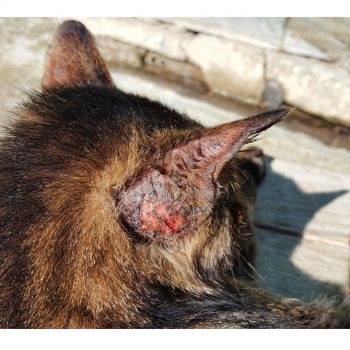
Fungal Zoonoses
A fungal infection, also known as mycosis, is a disease caused by a fungus. There are many different kinds of fungi. They are present everywhere in the environment. They live in the dirt, on the plats, on the skin, on inanimate objects, etc. They can lead to an array of diseases. These diseases may be skin infections or internal body infections.
Here are the details of a few very commonly occurring fungal diseases that are zoonotic in nature:

Sporotrichosis
It is an emerging fungal zoonosis caused by pathogenic fungi belonging to genus Sporothrix . Generally, most species from this genus are non-pathogenic environmental fungi present in soil, woods and decaying matter. However, some species like Sporothrix schenckii, S. brasiliensis, S. globosa, and S. luriei, cause disease in humans and animals. Human infection may occur through direct inoculation of fungal spores into skin and mucosa from environment. Zoonotic risk is more in case of S. brasiliensis and cat to cat, cat to dogs and cat to human transmission is possible. Cat-transmitted sporotrichosis has been documented in isolated cases or in small outbreaks in American and Asian continents. Incidence of cat-associated sporotrichosis is very high in Brazil, and Rio de Janeiro is considered as hyperendemic region for sporotrichosis.
